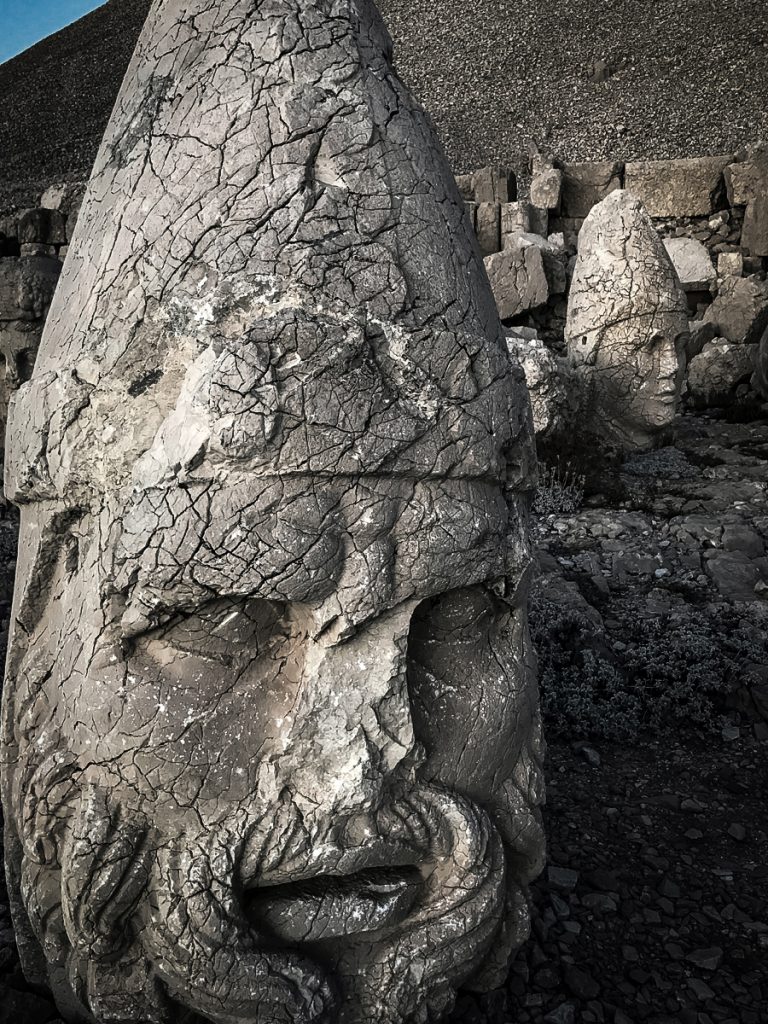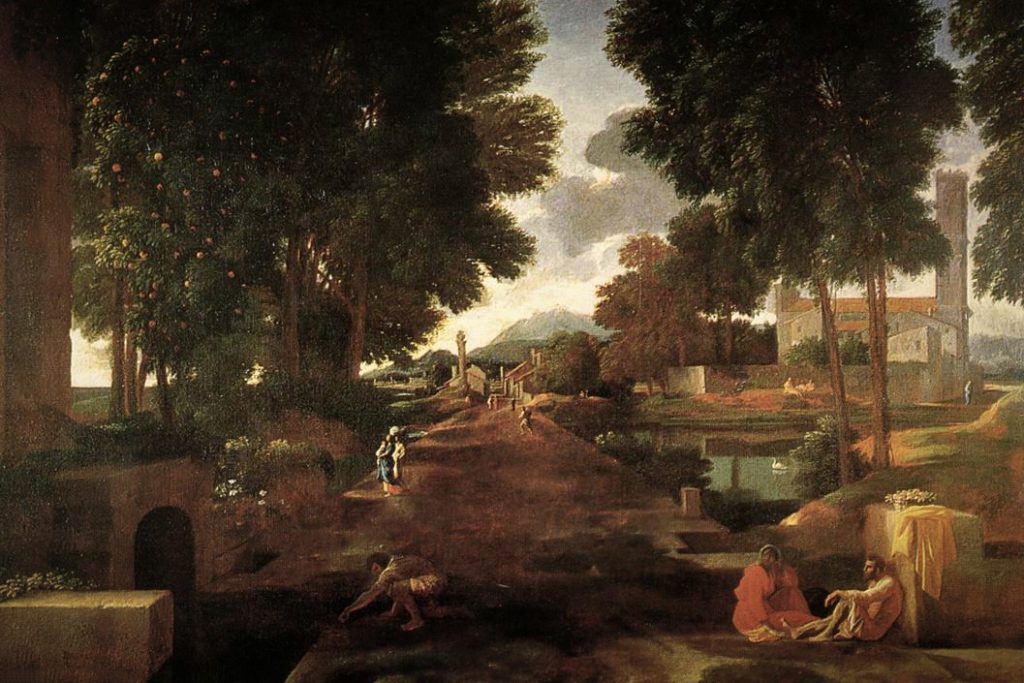The geographical relevance of Canaan compared to the surrounding territories of Egypt, Mesopotamia, Media, Persia, Anatolia, Crete, Cyprus, and others has often unrecognized spiritual significance throughout Scripture. To view the assembly of land and the chronologically ordered border formations as purely physical, natural, or socially constructed misses the deeper historical narrative about the emergence of the Kingdom of God and the messianic reign to come. People, places, and circumstances were supernaturally orchestrated together through geological, genealogical, and sovereign processes to bring about the fulfillment of Genesis 3:15. Where sovereign circumstances over time gradually converged at Pentecost (Acts 2:1) from since the divergence of Babel (Gen 11:8) intentionally situated within the cradle of civilization.1
As the Gentile nations surrounding Israel were first disinherited at Babel located in early Mesopotamia, they were scattered and placed under the spiritual rulership of the sons of God (Dt 32:8-9). Rulership, who were the fallen elohim,2 who became cursed (1 Enoch 6:1-8) and separated from immortality as they were to eventually die like men (Ps 82:7) due to their corruption, neglect, and harm brought to humanity. At Babel, they were given charge over the nations (Gen 11:7, Ps 82:1) with Yahweh’s reserved people as is portion or inheritance among them (Dt 4:19-20, 1 Sam 26:17-19). Through the suzerain-vassal treaty formed as the Abrahamic and Mosaic covenants of land, seed, and blessings, it becomes clear that Yahweh had chosen Canaan as Israel’s strategic location as sacred space to implement His redemptive work and replace the corrupted sons of God (Jn 1:12-13, Rm 8:14,19, Gal 4:5-6). A location set as a “land bridge” centered among surrounding nations between Asia, Europe, and African continents3 while governed by the corrupt and fallen rulers who were to eventually become adversaries judged (Gen 6:2, 1 Cor 2:6-8). With the arrival, ministry, death, burial, resurrection, ascension, and coronation of Christ, the Kingdom of God was again placed upon this earth to intersect with the Kingdom of Heaven (Heb 10:12-13).
With the Lord’s calling of Abraham, it is no coincidence that overlapping divine covenants squarely placed at the center of the nations as an intersection between natural and supernatural interests. Through what would progressively develop as a spiritual war between good and evil (Eph 6:12), the kingdom of God was to assert its position among Gentile nations as prepared territory reclaimed. Starting in Jerusalem, extending to Asia Minor, and then out to the rest of the earth (Rome, Greece, India, and beyond) before the second coming of Christ toward the fullness of time (Eph 1:10). Just as the people of Israel were by eternal covenant chosen by the Most-High and set aside as a kingdom of priests, a holy nation (Ex 19:6), they organized around their wilderness tabernacle as tribes. A temporary situation that echoed further in time as Zion in Jerusalem served as a central point in which all other tribes of Israel intentionally distributed throughout Canaan. The temple mount of Moriah became ground zero where the Gentile nation’s rulers in a spiritual sense would surrender or cede their territory (the souls of humanity) through the redemptive work of Christ. Yes, a kingdom of historical and geological relevance, but more significantly, profoundly spiritual with redemptive or damning trajectories. As the tribes of Israel were concentrically distributed, so it was with surrounding nations and beyond until they reached the entire circumference of the earth (Mt 28:18-19). With nations reclaimed (Ps 82:2-4), a harvest was made ready through the prevailing conquest of Christ, a new Joshua, as He said of His royalty over Christendom, “My kingdom is not of this world (Jn 18:36).”
Israel occupied sacred physical space or holy ground as Yahweh had chosen the land of Canaan as the territory of His people (Deut 32:49). Just as the tabernacle and the temple became designed and built to set aside and reserve space as holy to Yahweh and His people, He would dwell among them (Deut 29:46). As the Lord’s people were to be representatives of the nations, other nations governed by the corrupted sons of god were to surround Israel. So as holy people upon the holy land placed into position, a messianic king would arise through Judah4 to plunge a dagger into the heart of the spiritual enemy among nations (1 Pet 3:18-22). The chosen among the nations would become redeemed in a nonlinear fashion across millennia both backward and forward in time.
To make a punctuated distinction between holy ground and enemy territory, consider the Scriptural inferences that traverse between Naaman, the commander of the Syrian army (1 Sam 26:17-19), and two demonic encounters upon Jesus as revealed within Scripture. First, it was Namaan who recognized before Elijah that the ground he worshiped on was holy (2 Kings 5:15-19). With Elijah’s consent, Naaman gathered up dirt from holy ground and loaded a mule to carry it off with him to worship Yahweh. A worship ritual to Yahweh, before the god Rimmon under false pretenses, while in enemy territory (2 Kings 5:18). Naaman knew there was no other God in all the earth except Yahweh (2 Kings 5:15), nor was there holy ground in Syria, the country in which he resides. An idol or false god Rimmon was possibly inhabited by a corrupted son of God who craved worship (Deut 32:16-17).
What does this ancient historical narrative have to do with Jesus?
As recorded by the author of Matthew, Jesus and His apostles encounter a man inhabited by many demons from Bashan (Mt 17:14, Mk 5:1). They were from Gentile territory (spiritual enemy), and they as Legion accordingly referred to Jesus as “Son of the Most High God” (Mk 5:7). In relativistic parlance, they address Jesus to acknowledge Him as above the sons of God. Both in rank and incomparability. They were in East Galilee in the territory of Bashan, known as the abode of the dead and territory of evil spirits.5 Specifically, the spirits of the dead Rephaim written about during the conquest led by Joshua.
Shortly after, by comparison, when Jesus and His Apostles arrived in Capernaum, they again encountered another man possessed by numerous demons. This time, they were located in Israel, on holy ground where the demon-possessed man called our Lord, “Jesus of Nazareth (Mk 1:24).” A subtle difference between “Son of the Most High God,” and “Jesus of Nazareth” as theological distinctions concerning the origination and status of spiritual beings within the separate territories they occupied and recognized.
Jesus is Lord of Lords and King of Kings. The Kingdom of God is here, now. We have our marching orders, and they are to share the gospel and make disciples. To recover humanity wherever it is claimed within a world that is governed by corrupted rule until reconciliation, or final judgment.
Citations
[1] Dr. Michael Grisanti, BTS512 History of the Covenant People Course Notes, 9.
[2] Dr. Michael Heiser, Reversing Hermon: Enoch, The Watchers & the Forgotten Mission of Jesus Christ. (Crane: Defender Publishing), 38-43.
[3] Dr. Paul Lee Tan, Hal Lindsay, Section 3394 Strategic Importance in Encyclopedia of 7,700 Illustrations: Signs of the Times. (Bible Communications, 1996), 796.
[4] Dr. Michael Grisanti, BTS512 History of the Covenant People Course Notes, 37.
[5] Karel van der Toorn, et.al., Dictionary of Deities and Demons in the Bible, 2nd Ed. (Boston: Eerdmans Publishing, 1999), 161.
















